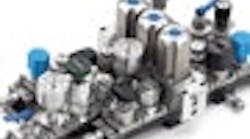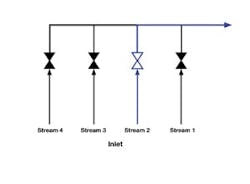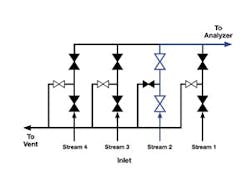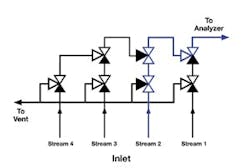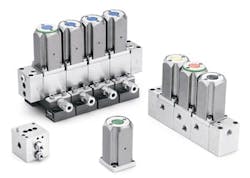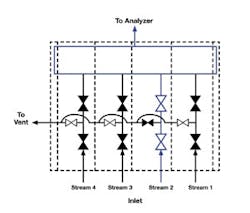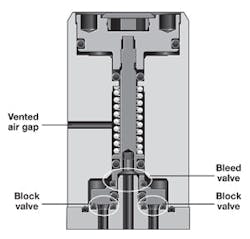More Sample Selection Content
Process engineers heavily rely on analytical instrumentation to ensure product quality. Such instrumentation plays a vital role in preventing contaminated or off-specification material from reaching the next stage of production or going out the plant gates. Catching any problems as early as possible can yield significant savings in reduced product loss and system maintenance. The efficiency and accuracy of spotting these problems principally lies in the delivery method of the sample for analysis. Sample analysis has moved from the laboratory to the field, enhancing efficiencies. To minimize system costs, many facilities use a single automated process analyzer to evaluate multiple sample streams in succession. These systems often rely on an assembly that selectively directs the sample streams to a shared passage line that leads to the analyzer. Click Image To Enlarge
Figure 1. Simplest Approach: Single ball valve
blocks sample streams ahead of a common
analyzer passage.
Click Image To Enlarge
Figure 2. Traditional DBB valve manifold: Here,
Stream 2 is shown going to the analyzer passage
while bleed valves vent residual samples in
other lines.
Click Image To Enlarge
Figure 3. Cascading DDB valve manifold:
This approach provides a longer flow path
and turns, causing lower flow rates for
streams farther upstream.
Click Image To Enlarge
Figure 4. Miniature modular assembly: Such an
assembly can accommodate multiple streams in
a limited amount of space and reduce contamination
and deadlegs.
Click Image To Enlarge
Figure 5. Integrated flow loop: This modular valve
manifold offers a direct route to the analyzer,
ensuring the same flow from all streams.
Click Image To Enlarge
Figure 6. Combined unit: Modern valve
designs put DDB functionality in a single unit;
some integrate a vented air gap to prevent
mixing of actuator and sample fluids.
Latest from Fluid Handling
Latest from Fluid Handling
